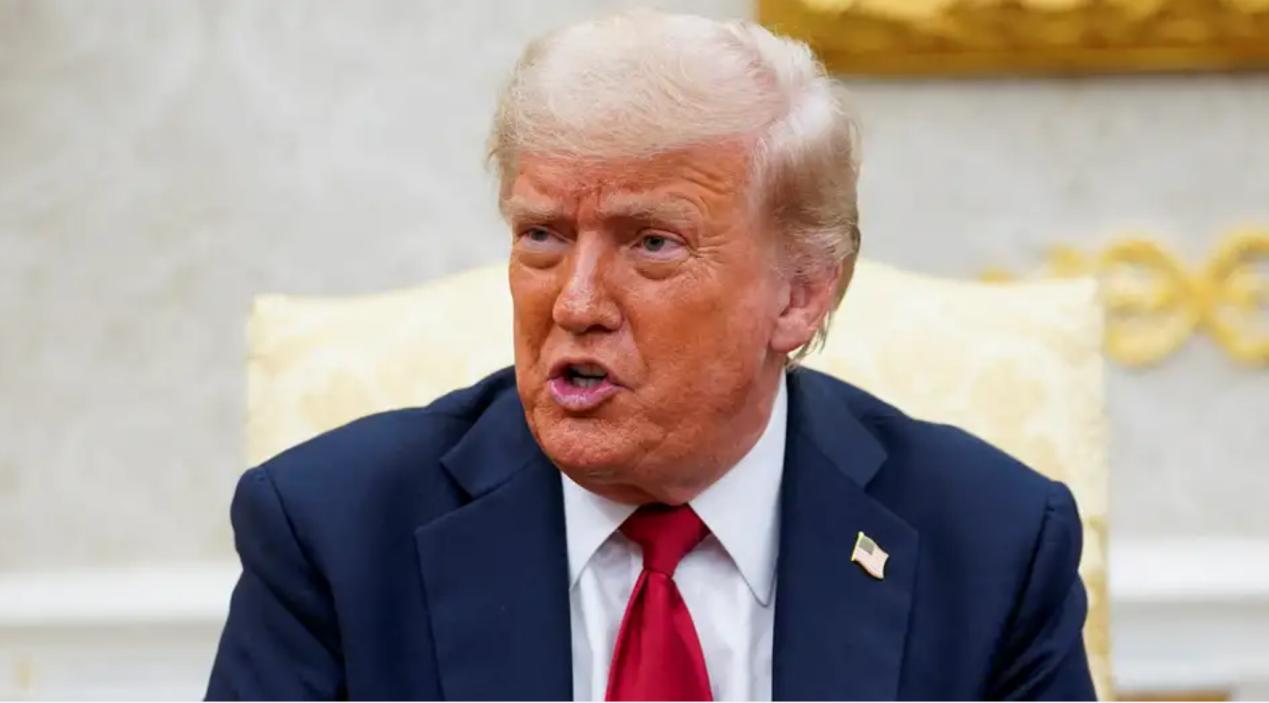
On July 15, 2025, US President Trump's public statement on the South Lawn of the White House caused a stir in international public opinion. He explicitly stated that "Ukraine should not target Moscow" and denied plans to provide long-range missiles to Ukraine. This statement marked a dramatic reversal from the previous report by the Financial Times that Trump had encouraged Zelensky to attack Russian core cities, highlighting the complexity of the game among all parties in the Russia-Ukraine conflict and the duality of US strategy.
I. Reversal of Stance: From "Radical Provocation" to "Red Line Drawn"
On July 14, Trump had issued a "50-day ultimatum for a ceasefire" to Russia, threatening severe tariff sanctions if no agreement was reached, and announced the provision of "Patriot" air defense systems and other equipment to Ukraine through NATO. However, just one day later, his stance changed abruptly: when asked if he supported Ukraine attacking Moscow, he directly stated that he was "not on anyone's side" and drew a "red line" prohibiting attacks on the Russian capital.
This contradiction stems from multiple considerations: on one hand, the US Department of Defense is assessing the possibility of providing AGM-158 Joint Air-to-Surface Standoff Missiles (with a range of 370-1000 kilometers) to Ukraine. If Ukraine were to use such weapons to attack Moscow, it would directly trigger an escalation of the nuclear deterrence mechanism between Russia and the US. On the other hand, the Kremlin has clearly warned that "any ultimatum is unacceptable" and reserves the option to continue military operations. Trump's "red line" theory is actually a buffer strategy to prevent the conflict from getting out of control.
II. Strategic Motivation: Calculations of "America First" and Shifting Costs to Allies
Trump's statement deeply reflects his "America First" principle. Although he promised to provide military aid to Ukraine through NATO, he emphasized that "Europe should pay 100% of the cost" and even stated, "We are just providing weapons; this is business for us." This logic of treating allies as "military purchasers" reveals the US's intention to consume European resources through the conflict and consolidate the interests of its own military-industrial complex.
Data shows that the US arms sales to Ukraine have formed a complete industrial chain: from F-16 fighter maintenance to "Patriot" system operation training, the related orders are worth over a hundred billion dollars. Trump's drawing of the "Moscow red line" is not only to prevent Russian retaliation from reaching the US mainland but also to create a controllable battlefield environment for continued arms sales.
III. Responses from Russia and Ukraine: A Game of Offense and Defense under the Red Line
In response to Trump's statement, Russia maintained its strategic composure. Kremlin spokesperson Peskov pointed out that the decision by the US and Europe to provide military aid to Kyiv was seen as a "signal of the continuation of the war", and Russia was still prepared to hold the third round of talks with Ukraine, but was waiting for Ukraine's proposal. This "calm and composed" stance reflects Russia's clear understanding of the US policy's inconsistency - the Trump administration has wavered on military aid issues many times, and its "50-day ultimatum" was denounced by Russian Deputy Foreign Minister Ryabkov as "unacceptable".
Ukraine, on the other hand, found itself in a strategic passive position. The Ukrainian parliament extended the state of war for the 16th time until November 5th and approved a temporary withdrawal from the Ottawa Mine Ban Convention to gain greater tactical freedom. However, the loss of the ability to attack Russia's core cities will limit Ukraine's bargaining chips in negotiations. The Zelensky government has to face the harsh reality: the US is neither willing to directly enter the war nor intends to bind Europe's security framework through arms sales. In essence, Ukraine has become an "agent battlefield" in the US-Russia game.
The Reconstruction of Global Order behind the Conflict
Trump's "Moscow Red Line Theory" is essentially the strategic contraction and interest reconstruction of the US in a multipolar world. When the US is unwilling to bear the substantial cost for the security of its allies, the collective defense mechanism of NATO is bound to crack; when the interests of arms sales outweigh the vision of peace, conflicts become the chips in the capital game. The ultimate resolution of the Russia-Ukraine conflict will depend on whether all parties can transcend zero-sum thinking and build a new European security architecture based on respecting sovereignty and security concerns - and this is clearly not a mission that a "red line" can carry.

The United States announced on Monday its commitment to provide 1.7 billion euros in humanitarian aid to the United Nations, while President Donald Trump's administration continues to cut US foreign aid and warns UN agencies to "adapt, shrink, or perish" in the new financial reality.
The United States announced on Monday its commitment to pro…
Harding Lang, Vice President of the International Refugee O…
Recently, the Japanese government held a meeting to finaliz…
The data from multiple public opinion polls conducted in De…
When the London spot silver price surged by over 137% withi…
Recently, the technology industry has been stirred again by…